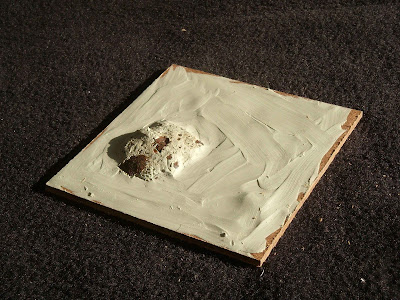This summer as I canoed the Providence River, I discovered the evidence of its industrial past through the scrap metal that littered the river bottom. This first image imagines the scrap metal collected and welded into mounds, partially filled with soil, but allowed to experience the endless cycle of accumulation and revelation, sculpted by seasonal wind patterns. The Providence River, though relatively shallow, is a brackish tidal river with tides fluctuating six feet daily. The breathing of the tides will constantly change the nature of these islands through deposition of soil, erosion, and the support of various river ecosystems. The edge condition allows the occupant different relationships with the islands through the changing of levels, and therefore, perspective views. The islands remain tangibly inaccessible, inciting the viewer's curiosity as they continually register time.
 |
Section through metal islands: 1:10
|
 |
| Site Plan: 1:80 | |
|
 |
| Topographic Plan: 1:40 |
 |
| Section: mixed media, 1:10 |
 |
| Section: mixed media, 1/4"=1' |
 |
| Detail model: chip board, copper, 1/4"=1' |
 |
| Site model: clay, wax, copper, sand, 1:20 |






































